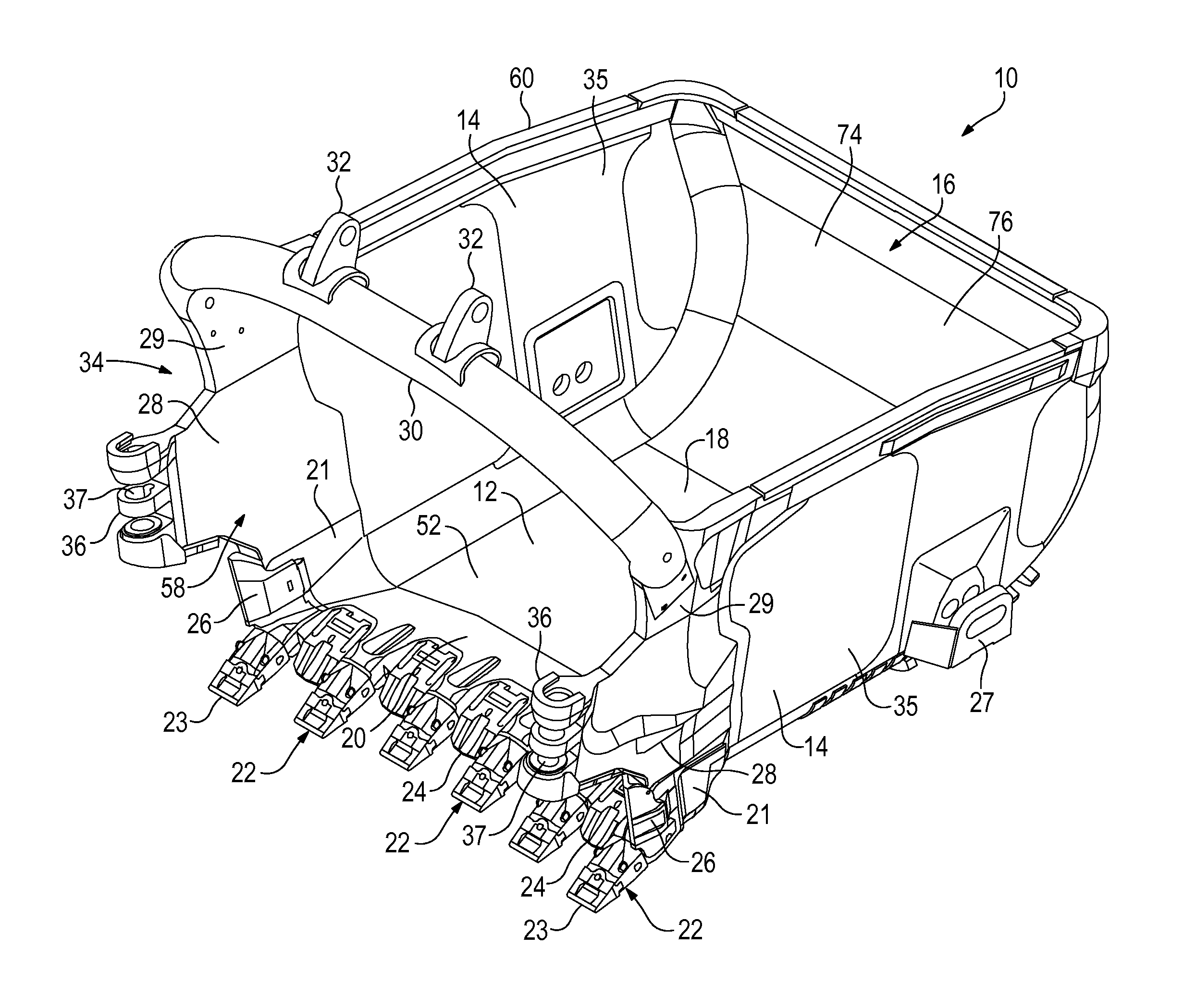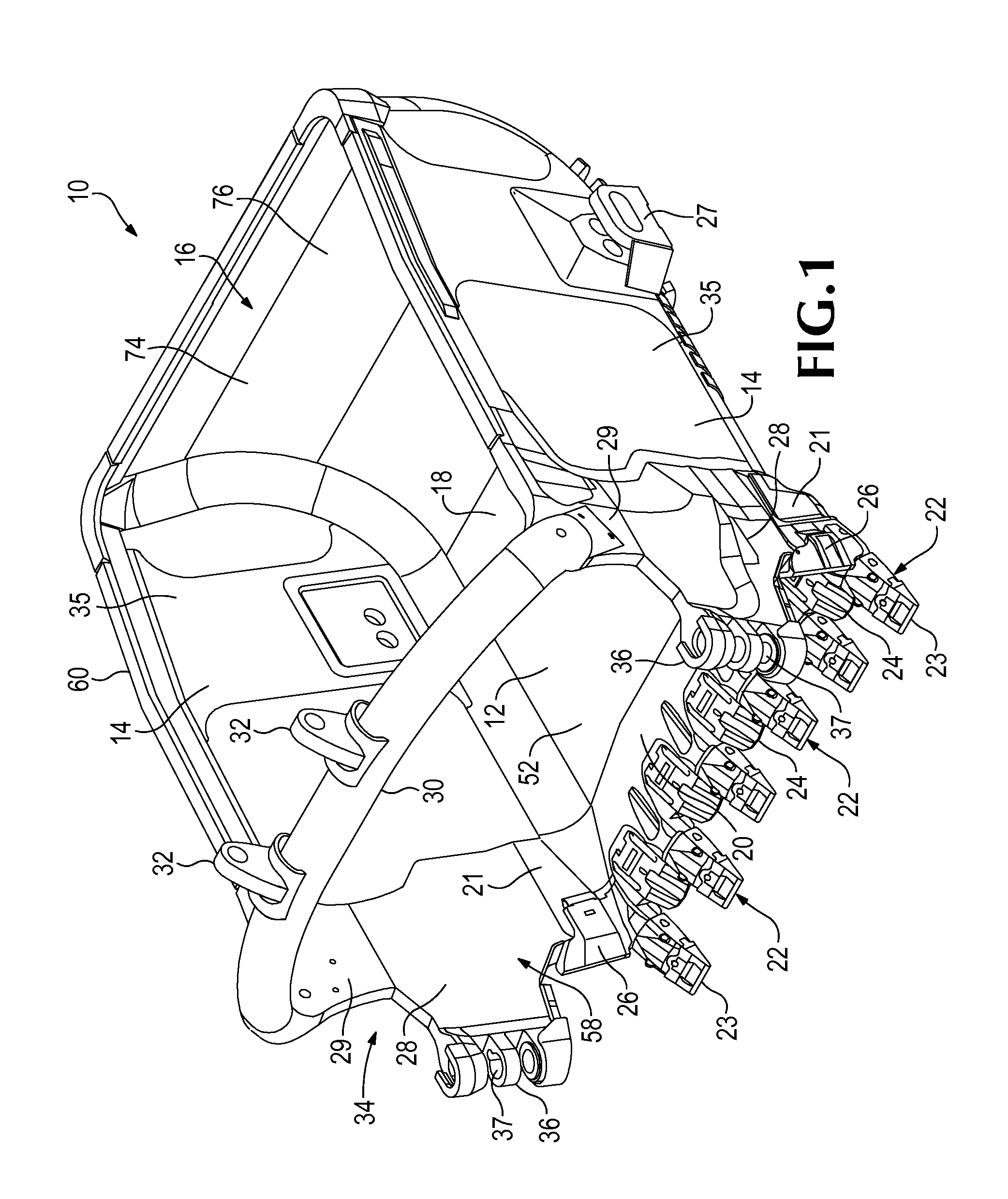Dragline Bucket, Rigging and System
a technology of rigging and buckets, applied in the direction of mechanical machines/dredgers, soil shifting machines/dredgers, construction, etc., can solve the problems of many bucket designs still following old or imperfect rules, affecting the efficiency of dragline operations, and reducing the amount of rigging. the effect of reducing the applied force and stress on the bucket and equipment, speeding up the fill rate, and increasing the payload
- Summary
- Abstract
- Description
- Claims
- Application Information
AI Technical Summary
Benefits of technology
Problems solved by technology
Method used
Image
Examples
Embodiment Construction
[0042]The present invention pertains to a new and improved dragline bucket and system which provides enhanced performance. The new design enables earthen material to be collected with less disruption and greater efficiency as compared to conventional dragline operations. While the present inventive design is particularly well suited for large dragline mining operations where the bucket has a capacity of 30 cubic yards or more, its aspects can also provide some benefits to other dragline operations. The inventive aspects of the present invention are described in this application in relation to a few exemplary dragline bucket designs, but are usable in a wide variety of bucket configurations. Further, in this application, relative terms are at times used, such as front, rear, up, down, horizontal, vertical, etc., for ease of the description. Nevertheless, these terms are not considered absolute; the orientation of a dragline bucket can change considerably during operation.
[0043]In one...
PUM
 Login to View More
Login to View More Abstract
Description
Claims
Application Information
 Login to View More
Login to View More - R&D
- Intellectual Property
- Life Sciences
- Materials
- Tech Scout
- Unparalleled Data Quality
- Higher Quality Content
- 60% Fewer Hallucinations
Browse by: Latest US Patents, China's latest patents, Technical Efficacy Thesaurus, Application Domain, Technology Topic, Popular Technical Reports.
© 2025 PatSnap. All rights reserved.Legal|Privacy policy|Modern Slavery Act Transparency Statement|Sitemap|About US| Contact US: help@patsnap.com



